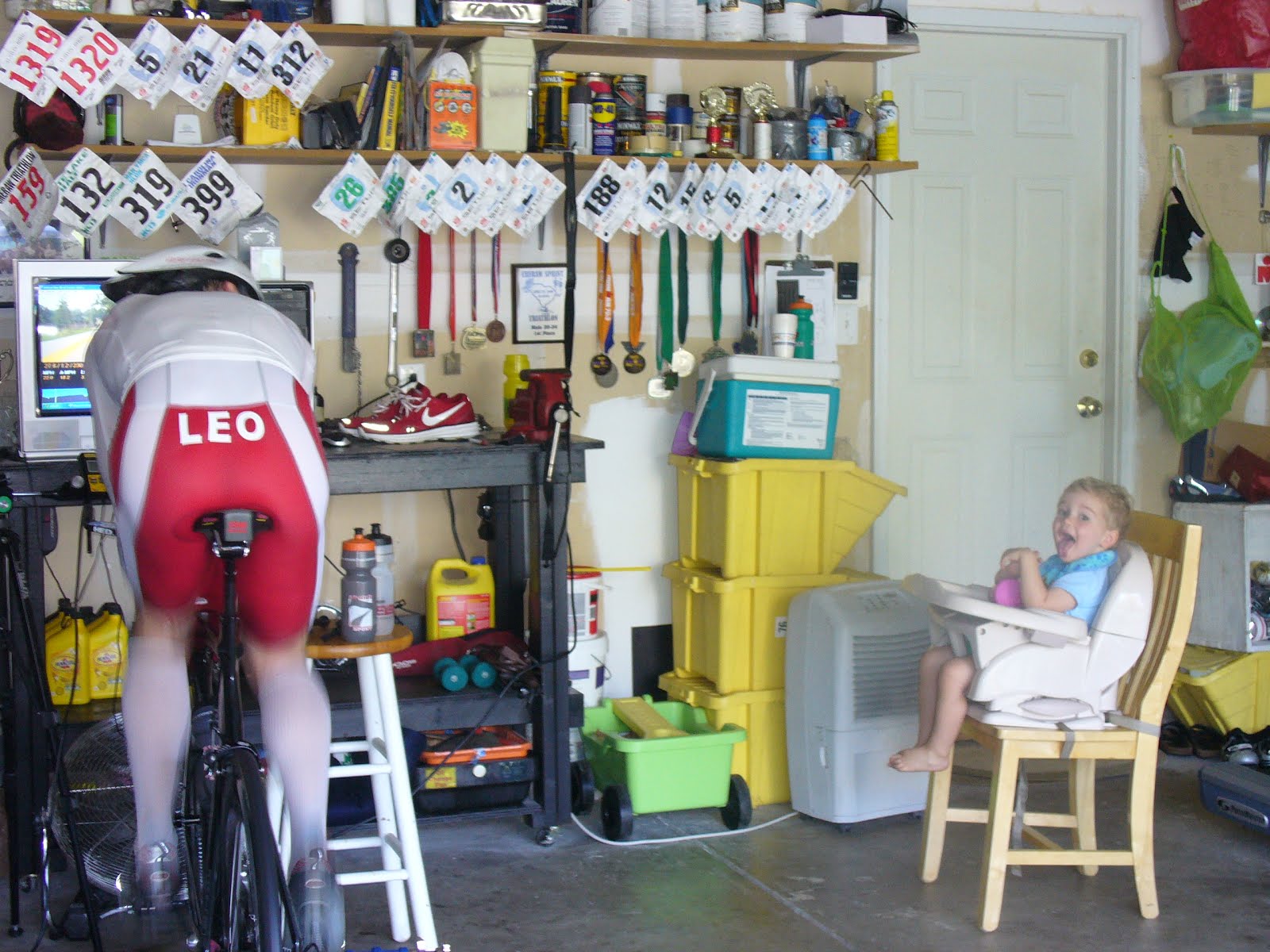This morning I mounted my Felt B10 (thank you TrySports - Charlotte) with full intentions of working through my 30 min 'pre-run' ladder warm up. Things felt great as I worked from the 150 to 280 watt range. I had done this ladder many times previously and knew how it should feel. So, things looked good...initially.
Lets rewind about 8 hrs prior to the 4 am 'wake up'. Enter Grace Kells Leo who is now 11 months old and who is now 'army crawling' and making Daddy melt daily. For months now she has been sleeping through the night, but not this one. From about 12 to 3 AM she decided she was going to keep Anne and I up. This is relevant to this post so hang with me.
Back to the bike. So, the 30 minutes were complete and the Nike Lunarfly were now attached to my feet, the Garmin 310XT was poised to work its magic, and the cool breeze of the morning greated me as I left the 'pain cave'. Picture below.

Right from the first step I knew this was going to be one of those days where I would have to throw the towel in. From onset my leg turnover was at 88 vs. the typical 91 to 92. I know this is a very small difference, but its significant when you have studied the numbers.
The point I want to hammer home today is very important. I hope you are not a slave to your training calendar. I hope you are able to listen to your body and trust that rest would serve you better then trudging through what is on your calendar. Please know I love to upload to my Training Peaks account. I love the sense of accomplishing what I have set out to do. Seeing a sound proggession in training volume is beautiful. It bugs when you know you only did 85% of what was planned for the week. Today I was poised to work over some 400s to keep the legs sharp and responsive, but they wanted to be slow and non-responsive. I listened and opted to call it a day and get poised for my first movie with Luke; Cars 2. Milk Duds, popcorn, etc will be consumed indeed.
I have always found that when you listen to your body and pick up on the small details that scream stop you always come out stronger on the other side. This takes years to succomb to, but when an athlete does it he becomes a wise and mature one. In fact, I will put my head out there and say the best athletes out there are the ones who have this mastered. Those who refuse to rest and listen to their bodies 'signals' (ie, lower then normal stride rate, resting pulse that is 15 bpm higher then normal at rest, falling asleep on your foam roller pre-exercise, etc.) have some learning to do.
So, listen to your body and refuse to be a slave to your training calendar. Be smart and know what you do today SHOULD be making you stronger...long term.
Enjoy the journey friends,
Coach L
